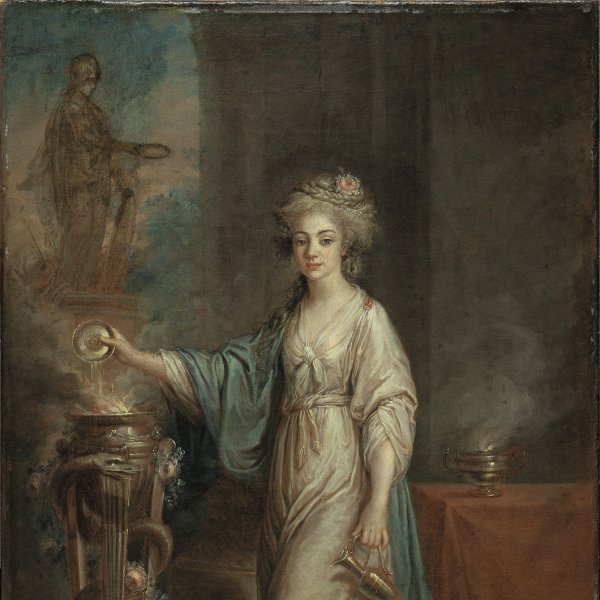Angelica Kauffmann
Angelica Kauffmann was a Swiss painter and printmaker and a notably precocious artist, celebrated for her talents from childhood. Angelica spent her childhood traveling and living with her father, the modest artist Joseph Johann Kauffmann in Switzerland, Austria and Italy. Before the age of fifteen she was already working independently on the execution of portraits. In 1763 the Kauffmanns were documented in Rome where Angelica embarked on a study of classical sculpture. She continued to paint portraits throughout her career but at this point executed her first history paintings, a genre from which women were generally excluded due to the requirements to study anatomy, an issue that Kauffman avoided by studying classical sculptures rather than live models.
In 1766 she accepted an invitation to visit London, separating from her father for the first time. At this date the British capital was the second great centre of Neo-classicism after Rome and Kauffmann became a highly celebrated painter. In 1768 she was one of the founder members of the Royal Academy of Arts. During her time in England, Kauffmann worked primarily as a portraitist but also produced various decorative schemes for Neo-classical interiors, particularly for buildings designed by Robert Adam.
On her return to Italy in 1781 Kauffmann married the decorative painter Antonio Zucchi. Over the following years her work matured stylistically and paintings from this period include Virgil reading ‘The Aeneid’ to Augustus and Octavia of 1788 (Hermitage Museum, St. Petersburg), and Hero and Leander (private collection, Germany). Kauffmann produced commissions for the leading courts of Europe and also continued to send paintings to England. During the last years of her life she received numerous honours, becoming one of the most celebrated and famous female painters of the day.





